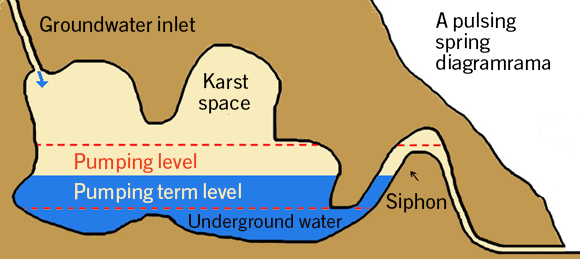In this experiment, we'll build a special cup that empties entirely as soon as the water reaches a certain level. This cup was invented in Greece over 2000 years ago and is used to this day in every washing machine.
Equipment to gather:
- Folding straw
- Disposable cup
- Small scissors
- Some play-doh
- Water
Instructions
The experiment can be performed as shown in the following video:
It is possible (and even recommended) to cut the straw sticking out of the cup just below the Play-doh line. This will make the cup look prettier.
Explanation
The folding straw is actually a pipe with two arms, where one is shorter than the other. The short one is folded inside the cup, and the long one extends outside the cup. When the arms are full, a siphon is formed, just like the one explained in the Automatic Water Pump Experiment. The height of the fold inside the cup determines the maximal height of water to which you can fill. Any more water, and everything will spill out.
The laundry softener tank mentioned in the video is made up of a pipe held within a bigger pipe, both of which are in the tank. Practically, this is the same as a folded straw.
Additional Information
This installation is called a "Pythagorean Cup" or "Pythagorean Goblet" because its invention is attributed to the Greek mathematician and scientist, Pythagoras, who lived in the 6th century B.C. He is most famous for the Pythagorean theorem, which ties between the lengths of a right-angled triangle. Until the washing machine was invented in the 20th century – which was over 2,400 years later - no useful purpose was found for this invention.
In nature, there is a phenomenon called a "rhythmic spring". This is a spring built like a huge Pythagoras cup: It has an underground space connected to a siphon naturally occurring in the rock.

When the water in the underground space goes over a certain height (the height of the siphon bend, like in a Pythagorean cup), the spring basin empties in one go. Then, it stops discharging water until it recharges above the siphon height threshold. In other words, the flow is intermittent.
Thanks to Dr. Sabine Stöcker-Segre for bringing this experiment to my attention.
Dr. Avi Saig
Davidson Institute of Science Education
Weizmann Institute of Science
Article translated from Hebrew by Aviv J. Sharon, M.Sc. student at the Weizmann Institute of Science.
Note for Surfers
If you find the explanations unclear or have further questions, please drop us a line on the forum. We welcome your comments, suggestions and feedback.
